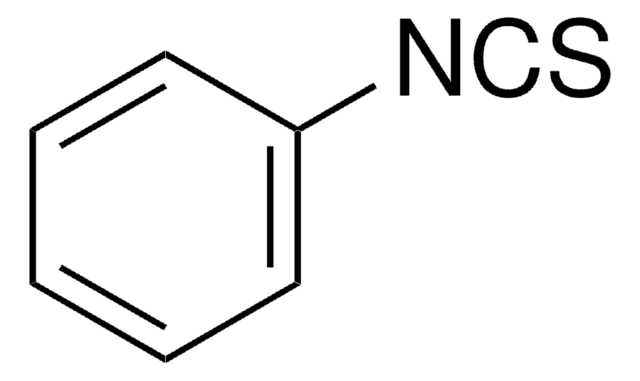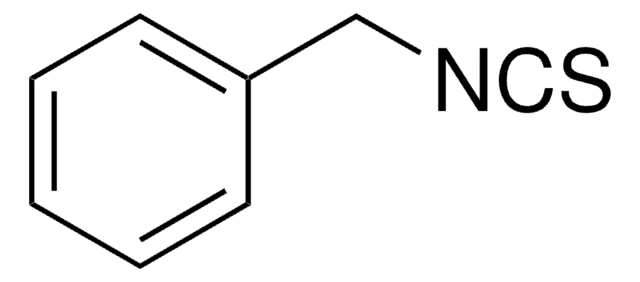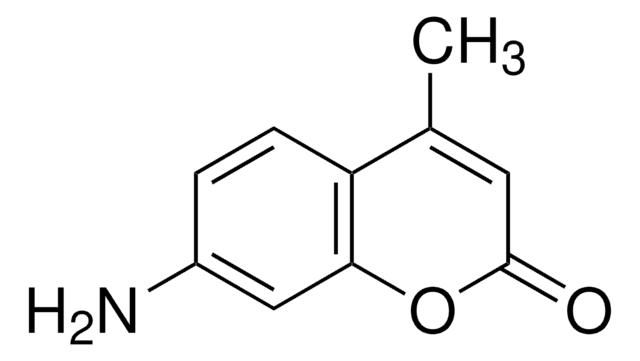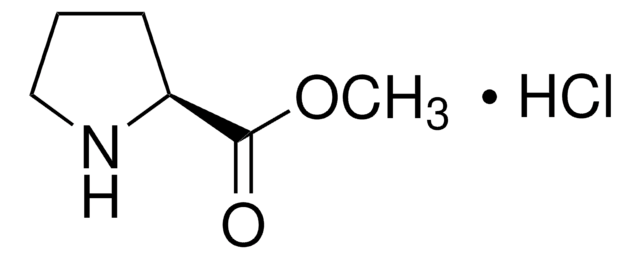P1034
Phenyl isothiocyanate
Sigma Grade, 8.36 M, suitable for solid phase protein sequencing analysis, ≥99% (GC), liquid
Synonym(s):
PITC
About This Item
Recommended Products
grade
Sigma Grade
Quality Level
Assay
≥99% (GC)
form
liquid
concentration
8.36 M
refractive index
n20/D 1.6515 (lit.)
bp
218 °C (lit.)
mp
−21 °C (lit.)
density
1.132 g/mL at 20 °C (lit.)
suitability
suitable for solid phase protein sequencing analysis
storage temp.
2-8°C
SMILES string
S=C=Nc1ccccc1
InChI
1S/C7H5NS/c9-6-8-7-4-2-1-3-5-7/h1-5H
InChI key
QKFJKGMPGYROCL-UHFFFAOYSA-N
Looking for similar products? Visit Product Comparison Guide
General description
Application
Packaging
Ten mL size packaged in screw cap amber vials under argon.
Signal Word
Danger
Hazard Statements
Precautionary Statements
Hazard Classifications
Acute Tox. 3 Oral - Resp. Sens. 1 - Skin Corr. 1B - Skin Sens. 1
Storage Class Code
6.1A - Combustible acute toxic Cat. 1 and 2 / very toxic hazardous materials
WGK
WGK 3
Flash Point(F)
190.4 °F - closed cup
Flash Point(C)
88 °C - closed cup
Personal Protective Equipment
Certificates of Analysis (COA)
Search for Certificates of Analysis (COA) by entering the products Lot/Batch Number. Lot and Batch Numbers can be found on a product’s label following the words ‘Lot’ or ‘Batch’.
Already Own This Product?
Find documentation for the products that you have recently purchased in the Document Library.
Customers Also Viewed
Our team of scientists has experience in all areas of research including Life Science, Material Science, Chemical Synthesis, Chromatography, Analytical and many others.
Contact Technical Service










